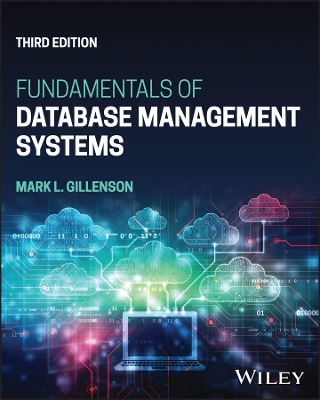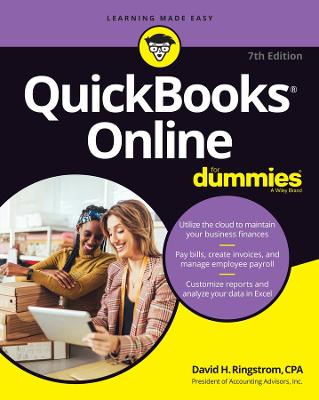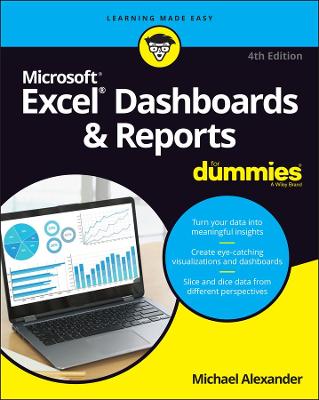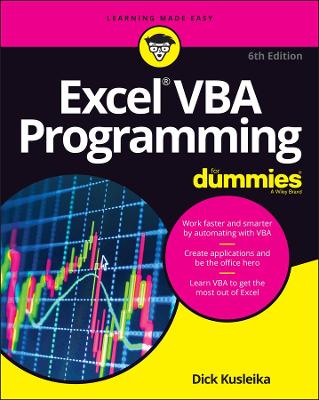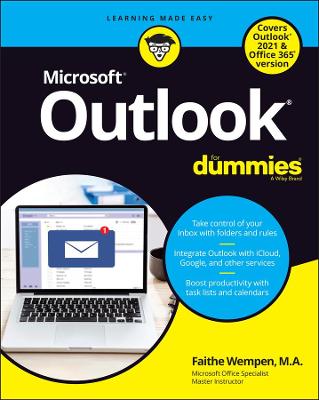Data Fluency
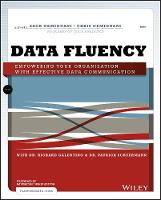 -15%
portes grátis
-15%
portes grátis
Data Fluency
Empowering Your Organization with Effective Data Communication
Gemignani, Chris; Galentino, Richard; Gemignani, Zach; Schuermann, Patrick
John Wiley & Sons Inc
12/2014
288
Mole
Inglês
9781118851012
15 a 20 dias
670
Introduction xxi
Chapter 1 The Last Mile Problem 1
The Information Age: Driving the Need for Data Fluency 2
Data Fluency: Unlock the Potential Energy of Data in Your Organization 4
Big Data and Data Metaphors 5
Our Data Fluency Framework 7
Case Studies: A Window into the Framework for Data Fluency 8
Data Consumers: Fantasy Football 8
Producers of Data Products: U.S. News 11
Organizational-Level Consumers: School District Woes 13
Organizational-Level Producers: Insurance Company Bottom Lines 15
Chapter 2 The Data Fluency Framework 19
The Data Fluency Framework 21
Individuals and the Organization 22
Using Data versus Presenting Data 23
Element 1: Data Literate Consumers 23
Element 2: Data Fluent Producers 24
Element 3: The Data Fluent Culture 26
Element 4: The Data Product Ecosystem 27
Connective Tissue 28
Resources for More Depth 28
Benefits of the Data Fluent Organization 29
How to Use This Framework 30
How Organizations Struggle 31
Summary 32
Chapter 3 How Organizations Struggle with Data Fluency 33
Pitfalls on the Path to Data Fluency 35
Report Proliferation 35
Balkanized Data 36
Data Elitism 38
The Supermodel 39
Searching for Understanding 40
Data Care 42
Metric Fixation 43
Finding Balance 45
Chapter 4 A Consumer's Guide to Understanding Data 47
Data Products 49
Everyday Data Products 51
Barriers to Using Data Products 55
Jargon 55
Not Knowing Where to Start or What to Focus On 57
Inconsistency 58
Learning the Language of Data 60
Atomic Data 60
Summarized Data 61
Exploring Data Tables 63
Rows Tell Stories 63
Columns Give the Bigger Picture 64
Understanding Charts and Visualizations 64
Comprehensibility 65
Dissecting Data Products 66
Where Does It Come From? 67
What Can I Learn from It? 68
What Can You Do with It? 74
Wrapping Up 77
Chapter 5 Data Authors: Skilled Designers of Data Presentations 79
A Rare Skillset 80
What You'll Learn 81
Guided Conversations 82
Finding Your Purpose and Message 84
Let the Data Speak 85
Your Objectives 85
Your Audience 86
Information Discrimination 88
Defining Meaningful and Actionable Metrics 92
Creating Structure and Flow to Your Data Products 95
A Guided Path: Structure and Flow 95
Why Structure Matters? 97
Structure Options 97
Designing Attractive, Easy-to-Understand Data Products 103
Form 103
Visualizing Your Data 104
Color 107
Typography 109
Wrapping Data in Context 111
Language 112
Creating Dialogue with Your Data Products 114
Your Audience's Audience 114
Data Leading to Dialogue 114
Design Principles 115
Visualizations 115
Design Principles for Data Products 121
Compactness and Modularity 121
Gradual Reveal 121
Guide Attention 122
Support Casual Use 122
Lead to Action 123
Customizable 124
Explanation before Information 124
Viva the Authors of Data Products 125
Chapter 6 The Data Fluent Culture 127
Leadership, Culture, and Communicating Priorities 129
Set and Communicate Expectations 130
Articulate Specific, Measureable Indicators 131
Celebrate Effective Data Use and Products 132
Use Data to Inform Decisions and Actions 133
Establishing Key Metrics to Rally Around 134
What Makes a Good Metric? 134
Using Metrics to Drive Organizational Improvement 137
Choose a Few Key Metrics at Any Given Level 138
Select Key Metrics That Align with the Mission and Vision 138
Show Employees That Their Contributions Are Essential 138
Reference Key Metrics and Data Analysis When Communicating Goals 139
Avoiding Metrics Pitfalls 139
Shared Understandings 141
Common Vocabulary and Terminology Relating to Organization-Specific Data 143
Clear Definitions of Measures 143
Standard Forms for Collecting Data 143
Understanding and Appreciating Credible, Reliable Data Sources 145
Understand the Strengths and Weaknesses of Data Sources 145
Provide Transparency into How Data Is Manipulated and Modeled 147
Define a Shared Set of Key Metrics 148
Understanding the Purpose and Motivation for Data Products 149
Everyday Activities 151
Data Consumers 152
Help Individuals Evaluate Data without Distraction 152
Focus on the Message 153
Data Products 153
Establish Clear Guidelines for Quality Data Products 153
Develop a Feedback Mechanism for Data Products to Help Evolve and Improve Content. 155
Celebrate Examples of Quality Data Products 156
Data Usage 156
Encourage Data-Driven Decision-Making 157
Evaluating Effective Data Use within the Organization 157
Evolution of Data Fluent Cultures 158
Chapter 7 The Data Product Ecosystem 161
Data Products for Information Delivery 162
Necessary Conditions 163
Learning from the App Store 165
Demand 167
Top-Down Demand Map 167
Grassroots Needs 169
Where to Begin 169
Design 170
Objective 170
Start with a Style Guide 172
Develop 172
"It's a Poor Craftsman Who Blames His Tools" 174
Discover 175
Objective 176
Where to Begin: A Centralized Inventory of Data Products 176
Discuss 177
Objective 177
Where to Begin: Create a Place to Capture Insights 178
Distill 179
Learning from Wikipedia 179
Objective 180
What Can You Do Without? 180
"Only Connect" 181
Chapter 8 The Journey to Data Fluency 183
Why Data Fluency? 185
Data Consumers: Creating a Sophisticated Audience 187
Data Product Producers: The Skills to Enable Effective Data Communication 188
Data Fluent Culture: Building a Shared Understanding of Data 189
Data Product Ecosystem: Tools and Processes to Facilitate the Fluid Exchange of Information 189
Begin the Journey 190
Feature The Data Fluency Inventory 193
The Data Fluency Inventory Survey Questions 194
Component 1: Data Consumer Literacy 196
Use of Data 197
Data Skills 198
Value Placed on Data 199
Component 2: Data Product Author Skills 200
Tools 201
Skills 202
Perceptions and Attitudes 203
Component 3: Data Fluent Culture 204
Leadership 205
Key Metrics 205
Shared Understanding and Everyday Data Use 206
Component 4: Data Product Ecosystem 207
Demand and Design 208
Develop 208
Discover 209
Discuss and Distill 209
Summary of the DFI 210
DFI Scoring Guide (for Organizations) 210
Question Types and Point Values 211
Organization Scores 211
Component 1: Data Consumer Literacy 211
Thoughts for an Organizational Leader 212
Component 2: Data Product Authors 212
Thoughts for an Organizational Leader 213
Component 3: Data Fluent Culture 213
Thoughts for an Organizational Leader 214
Component 4: Data Product Ecosystem 214
Thoughts for an Organizational Leader 214
Organizational Scoring Summary 215
Scoring Guide (for Individuals) 215
What Can You Measure as an Individual? 216
Component 1: Data Consumer (Individual Only) 216
Component 2: Data Authors (Individual Only) 217
Individual Scoring Guide Summary 217
DFI Supporting Materials 218
Survey Introduction E-mail 218
Data Literacy Quiz 219
Appendix A Designing Data Products 223
A Checklist for Creating Data Products 224
Think Like a Designer 226
Designed to Be Used 228
Breaking Free of the One-Page Dashboard Rule 229
Dashboard Alerts Checklist 231
Context: Users Need to Understand How an Alert Is Defined and How It Fits into the Larger Picture 232
Cogency: An Alerting System Needs to Avoid Causing Unnecessary Alarm While Delivering Easy-to-Understand Information That Can Be Acted Upon 232
Communication: Alerts Must Be Designed to Effectively Capture Attention and Inform 233
Control: Advanced Alert System Should Give Users the Ability to Customize and Manage Alerts 233
8 Features of Successful Real-time Dashboards 234
Appendix B Style Guide 237
Style Guide Sample 1: Fonts 239
Style Guide Sample 2: Colors 240
Style Guide Sample 3: Date/Number Formatting 241
Style Guide Sample 4: Bar Charts 242
Style Guide Sample 5: Trend Charts 243
Style Guide Sample 6: Tables 244
Index 245
Introduction xxi
Chapter 1 The Last Mile Problem 1
The Information Age: Driving the Need for Data Fluency 2
Data Fluency: Unlock the Potential Energy of Data in Your Organization 4
Big Data and Data Metaphors 5
Our Data Fluency Framework 7
Case Studies: A Window into the Framework for Data Fluency 8
Data Consumers: Fantasy Football 8
Producers of Data Products: U.S. News 11
Organizational-Level Consumers: School District Woes 13
Organizational-Level Producers: Insurance Company Bottom Lines 15
Chapter 2 The Data Fluency Framework 19
The Data Fluency Framework 21
Individuals and the Organization 22
Using Data versus Presenting Data 23
Element 1: Data Literate Consumers 23
Element 2: Data Fluent Producers 24
Element 3: The Data Fluent Culture 26
Element 4: The Data Product Ecosystem 27
Connective Tissue 28
Resources for More Depth 28
Benefits of the Data Fluent Organization 29
How to Use This Framework 30
How Organizations Struggle 31
Summary 32
Chapter 3 How Organizations Struggle with Data Fluency 33
Pitfalls on the Path to Data Fluency 35
Report Proliferation 35
Balkanized Data 36
Data Elitism 38
The Supermodel 39
Searching for Understanding 40
Data Care 42
Metric Fixation 43
Finding Balance 45
Chapter 4 A Consumer's Guide to Understanding Data 47
Data Products 49
Everyday Data Products 51
Barriers to Using Data Products 55
Jargon 55
Not Knowing Where to Start or What to Focus On 57
Inconsistency 58
Learning the Language of Data 60
Atomic Data 60
Summarized Data 61
Exploring Data Tables 63
Rows Tell Stories 63
Columns Give the Bigger Picture 64
Understanding Charts and Visualizations 64
Comprehensibility 65
Dissecting Data Products 66
Where Does It Come From? 67
What Can I Learn from It? 68
What Can You Do with It? 74
Wrapping Up 77
Chapter 5 Data Authors: Skilled Designers of Data Presentations 79
A Rare Skillset 80
What You'll Learn 81
Guided Conversations 82
Finding Your Purpose and Message 84
Let the Data Speak 85
Your Objectives 85
Your Audience 86
Information Discrimination 88
Defining Meaningful and Actionable Metrics 92
Creating Structure and Flow to Your Data Products 95
A Guided Path: Structure and Flow 95
Why Structure Matters? 97
Structure Options 97
Designing Attractive, Easy-to-Understand Data Products 103
Form 103
Visualizing Your Data 104
Color 107
Typography 109
Wrapping Data in Context 111
Language 112
Creating Dialogue with Your Data Products 114
Your Audience's Audience 114
Data Leading to Dialogue 114
Design Principles 115
Visualizations 115
Design Principles for Data Products 121
Compactness and Modularity 121
Gradual Reveal 121
Guide Attention 122
Support Casual Use 122
Lead to Action 123
Customizable 124
Explanation before Information 124
Viva the Authors of Data Products 125
Chapter 6 The Data Fluent Culture 127
Leadership, Culture, and Communicating Priorities 129
Set and Communicate Expectations 130
Articulate Specific, Measureable Indicators 131
Celebrate Effective Data Use and Products 132
Use Data to Inform Decisions and Actions 133
Establishing Key Metrics to Rally Around 134
What Makes a Good Metric? 134
Using Metrics to Drive Organizational Improvement 137
Choose a Few Key Metrics at Any Given Level 138
Select Key Metrics That Align with the Mission and Vision 138
Show Employees That Their Contributions Are Essential 138
Reference Key Metrics and Data Analysis When Communicating Goals 139
Avoiding Metrics Pitfalls 139
Shared Understandings 141
Common Vocabulary and Terminology Relating to Organization-Specific Data 143
Clear Definitions of Measures 143
Standard Forms for Collecting Data 143
Understanding and Appreciating Credible, Reliable Data Sources 145
Understand the Strengths and Weaknesses of Data Sources 145
Provide Transparency into How Data Is Manipulated and Modeled 147
Define a Shared Set of Key Metrics 148
Understanding the Purpose and Motivation for Data Products 149
Everyday Activities 151
Data Consumers 152
Help Individuals Evaluate Data without Distraction 152
Focus on the Message 153
Data Products 153
Establish Clear Guidelines for Quality Data Products 153
Develop a Feedback Mechanism for Data Products to Help Evolve and Improve Content. 155
Celebrate Examples of Quality Data Products 156
Data Usage 156
Encourage Data-Driven Decision-Making 157
Evaluating Effective Data Use within the Organization 157
Evolution of Data Fluent Cultures 158
Chapter 7 The Data Product Ecosystem 161
Data Products for Information Delivery 162
Necessary Conditions 163
Learning from the App Store 165
Demand 167
Top-Down Demand Map 167
Grassroots Needs 169
Where to Begin 169
Design 170
Objective 170
Start with a Style Guide 172
Develop 172
"It's a Poor Craftsman Who Blames His Tools" 174
Discover 175
Objective 176
Where to Begin: A Centralized Inventory of Data Products 176
Discuss 177
Objective 177
Where to Begin: Create a Place to Capture Insights 178
Distill 179
Learning from Wikipedia 179
Objective 180
What Can You Do Without? 180
"Only Connect" 181
Chapter 8 The Journey to Data Fluency 183
Why Data Fluency? 185
Data Consumers: Creating a Sophisticated Audience 187
Data Product Producers: The Skills to Enable Effective Data Communication 188
Data Fluent Culture: Building a Shared Understanding of Data 189
Data Product Ecosystem: Tools and Processes to Facilitate the Fluid Exchange of Information 189
Begin the Journey 190
Feature The Data Fluency Inventory 193
The Data Fluency Inventory Survey Questions 194
Component 1: Data Consumer Literacy 196
Use of Data 197
Data Skills 198
Value Placed on Data 199
Component 2: Data Product Author Skills 200
Tools 201
Skills 202
Perceptions and Attitudes 203
Component 3: Data Fluent Culture 204
Leadership 205
Key Metrics 205
Shared Understanding and Everyday Data Use 206
Component 4: Data Product Ecosystem 207
Demand and Design 208
Develop 208
Discover 209
Discuss and Distill 209
Summary of the DFI 210
DFI Scoring Guide (for Organizations) 210
Question Types and Point Values 211
Organization Scores 211
Component 1: Data Consumer Literacy 211
Thoughts for an Organizational Leader 212
Component 2: Data Product Authors 212
Thoughts for an Organizational Leader 213
Component 3: Data Fluent Culture 213
Thoughts for an Organizational Leader 214
Component 4: Data Product Ecosystem 214
Thoughts for an Organizational Leader 214
Organizational Scoring Summary 215
Scoring Guide (for Individuals) 215
What Can You Measure as an Individual? 216
Component 1: Data Consumer (Individual Only) 216
Component 2: Data Authors (Individual Only) 217
Individual Scoring Guide Summary 217
DFI Supporting Materials 218
Survey Introduction E-mail 218
Data Literacy Quiz 219
Appendix A Designing Data Products 223
A Checklist for Creating Data Products 224
Think Like a Designer 226
Designed to Be Used 228
Breaking Free of the One-Page Dashboard Rule 229
Dashboard Alerts Checklist 231
Context: Users Need to Understand How an Alert Is Defined and How It Fits into the Larger Picture 232
Cogency: An Alerting System Needs to Avoid Causing Unnecessary Alarm While Delivering Easy-to-Understand Information That Can Be Acted Upon 232
Communication: Alerts Must Be Designed to Effectively Capture Attention and Inform 233
Control: Advanced Alert System Should Give Users the Ability to Customize and Manage Alerts 233
8 Features of Successful Real-time Dashboards 234
Appendix B Style Guide 237
Style Guide Sample 1: Fonts 239
Style Guide Sample 2: Colors 240
Style Guide Sample 3: Date/Number Formatting 241
Style Guide Sample 4: Bar Charts 242
Style Guide Sample 5: Trend Charts 243
Style Guide Sample 6: Tables 244
Index 245



